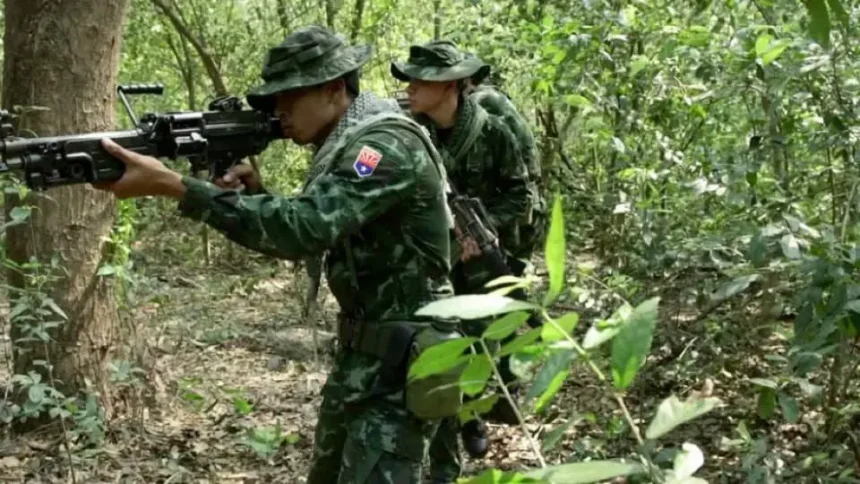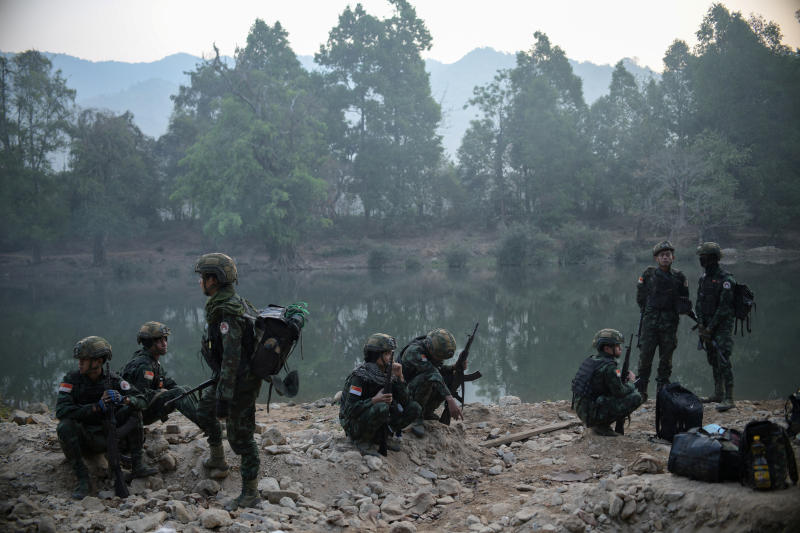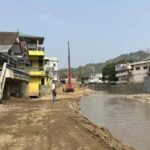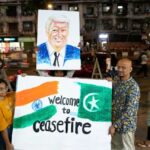MAE SOT, Thailand — Myanmar’s Kayin State, just seven kilometres from Thailand’s Tak province, has turned into a hotspot in the growing conflict between the Karen National Liberation Army (KNLA) and Myanmar’s army, the Tatmadaw.
On May 9, 2025, heavy clashes erupted as the KNLA, joined by the Karen National Defence Organisation (KNDO), took control of the Repanadi military base in Hpa-An district. The fighting forced more than 300 people, mostly women, children, and older residents, to escape into Thailand. The incident is raising doubts about the Tatmadaw’s ability to hold power.
Since 1949, the KNLA, the military arm of the Karen National Union (KNU), has fought for Karen self-rule. Their takeover of the Repanadi base, a key stronghold for the junta, represents a clear shift in their campaign against the regime that ousted Aung San Suu Kyi’s government on February 1, 2021. On X, @ThaiEnquirer reported that the KNU and KNDO used drones during the three-day operation, signalling a boost in their tactics.
Residents in Hpa-An district described the battle as intense, with loud shelling and drone attacks echoing across the Moei River and into Thailand’s Tha Song Yang district. Thai border forces, already on high alert, stepped up security as the violence crept closer. “We heard explosions all night,” a Mae Sot resident shared, asking not to be named. “The fighting is scary, but it’s the airstrikes that worry us. The junta doesn’t care who they hit.”
The KNLA’s win at Repanadi follows a series of recent gains. In April 2024, they briefly captured Myawaddy, a key trading town, before pulling back to keep civilians safe from air attacks. Taking Repanadi shows a new determination to disrupt the Tatmadaw’s border control, cut off trade, and reduce its income. The army’s response—using mortars and airstrikes despite a ceasefire for earthquake recovery—has only made locals angrier.
Refugees Escape the Violence
While Repanadi was under attack, civilians suffered the most. By May 10, Thai officials counted 328 Myanmar people, mostly Karen, crossing into Tak province for safety. Photos from the scene showed families wading through the Moei River with their belongings, while Thai soldiers watched over the border near the 2nd Thailand-Myanmar Friendship Bridge. This brings back memories of April 2024, when 3,000 people fled from Myawaddy.
Thailand has often sheltered people fleeing Myanmar, but balancing compassion with regional politics is tough. Foreign Minister Parnpree Bahiddha-Nukara said the country could accept up to 100,000 refugees, yet local staff in Tak say resources are stretched thin. “We’re giving food, clothes, supplies,” said a government official in Tak, speaking off the record. “But if the fighting keeps going, we’ll need more support.” People like Naw K’nyaw Paw from the Karen Women’s Organisation have helped arrange safe passage for over 1,000 refugees during earlier battles, showing how important local leaders are.
Those who fled share stories of harsh army tactics. Many describe random airstrikes and shelling in civilian areas—a method the Tatmadaw has used since 2021 to crush resistance. “They bombed near our home,” said a mother of three from Hpa-An. “We had to run.” The National Unity Government, a civilian group, says the military targets homes and public buildings, forcing more people to leave.
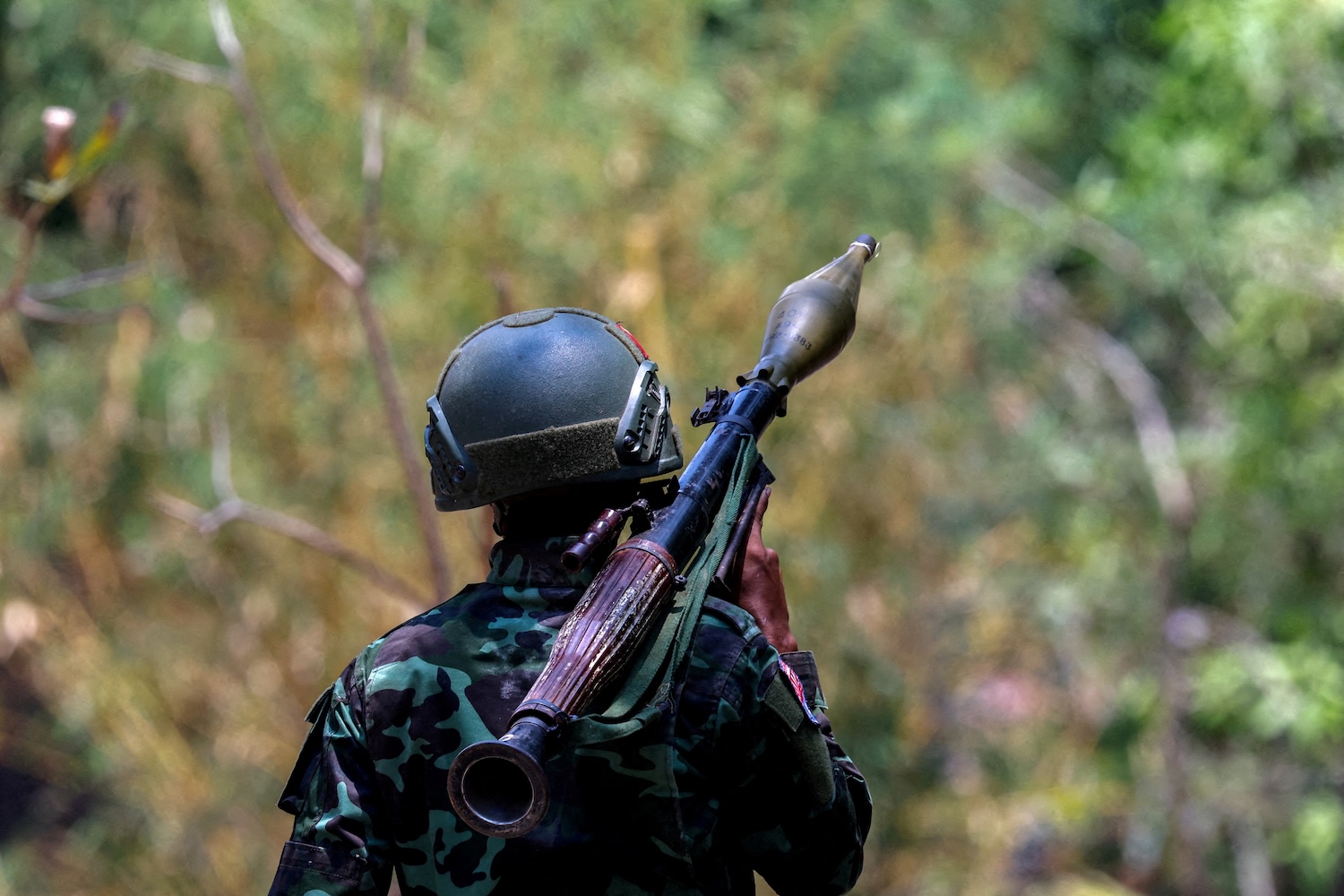
The Ongoing Effects of the Coup
The 2021 coup, which removed Aung San Suu Kyi and triggered mass protests, has thrown Myanmar into a deep civil war. The Tatmadaw, once seen as unbeatable, now faces strong opposition from groups like the KNLA and pro-democracy People’s Defence Forces (PDFS). Since October 2023, the military has lost key ground along Myanmar’s borders, including in Shan, Rakhine, and now Kayin states.
The KNLA’s renewed strength comes from old grievances and new partnerships. Since the coup, the KNU has trained thousands of anti-junta fighters, joining with PDFS across Karen, Mon, Bago, and Tanintharyi areas. Fighters like Way Pweh Ah, a former chef who joined after being beaten during the 2021 protests in Yangon, reflect this shift. “My grandfather couldn’t beat them, my uncle couldn’t beat them, but now it’s our turn,” he told Foreign Policy.
Still, the junta remains a threat. Analyst Morgan Michaels points out that operations like the Aung Zeya offensive, which retook Kawkareik in 2024, show the army can still regroup. Its use of airstrikes and heavy weapons, often hitting civilian sites, puts pressure on the KNLA’s supplies and spirit. The months after Kawkareik gave the junta time to focus on other areas, raising doubts about whether the KNLA can keep up the fight long term.
Thailand’s Careful Approach
Thailand’s handling of the crisis is complicated. While offering aid, Bangkok has not openly backed Myanmar’s rebels, wary of making things worse along the border. Past worries about Myanmar breaking apart and incidents like a 2022 Burmese jet entering Thai airspace keep security forces on guard. On May 1, Thai fighter jets flew over Tak after Myanmar dropped 500-pound bombs near the border, shaking up local communities.
Thai Prime Minister Srettha Thavisin, who visited Mae Sot in April 2024, has focused on keeping the border stable and locals safe. Reports have surfaced—like one from a former aid worker on Reddit—about Thai officials quietly giving arms to Karen groups as a buffer against the Tatmadaw, hinting at a more pragmatic approach behind the scenes. Thailand’s call to host ASEAN talks to solve the Myanmar crisis shows its diplomatic goals, but real progress is still far off.
Capturing Repanadi is both a strategic and symbolic win for the KNLA, though what comes next is unclear. For the KNLA, it boosts hope and the sense that their efforts matter.
Fighters like Htoo Naw, a retired commando who returned to the front lines at Kyaikdon in 2024, believe victory can be achieved. For the army, repeated losses are hurting morale and making its hold on power look weak. Analyst Richard Horsey notes these defeats could have big mental and political effects in Naypyidaw.
As more refugees cross into Thailand and the KNLA strengthens its positions, the human impact of this conflict remains clear. While other countries have imposed sanctions, no real solution has emerged. For now, Kayin State’s forests are the centre of a long fight, where the Karen continue their push for self-rule against an army determined to stay in control. For those living through it, survival is the only focus.




